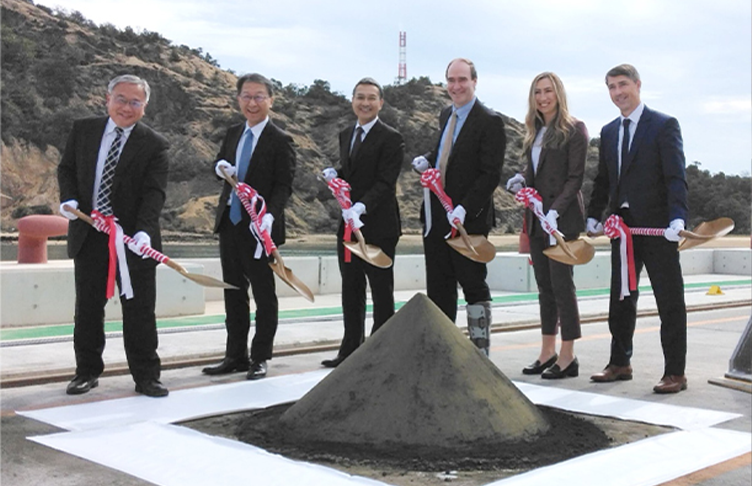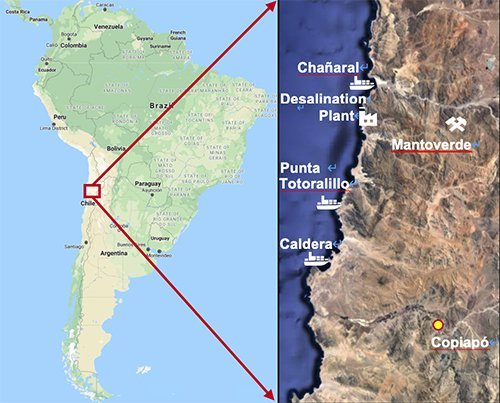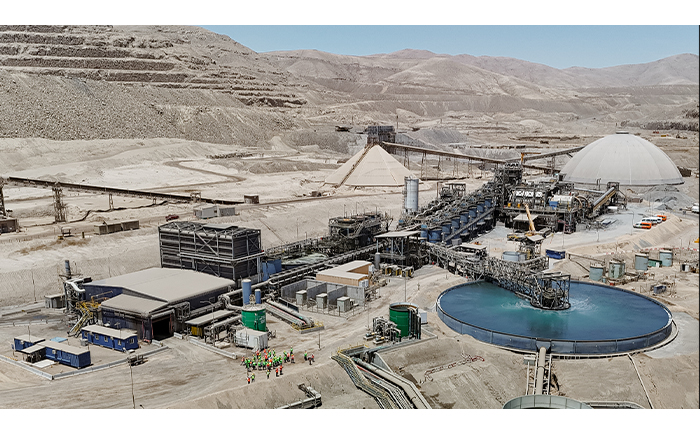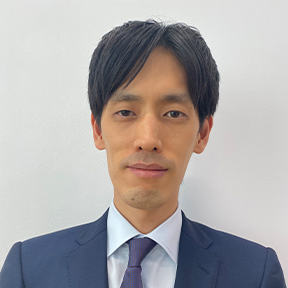2025.01.16

Far away, but hot! Mitsubishi Materials and Chile in South America have started a new mining and recycling operation

https://www.mmc.co.jp/corporate/en/news/2024/news20241028.html
The groundbreaking ceremony used actual copper concentrate to mark the arrival of the first
shipment from the Mantoverde Copper Mine. Mitsubishi Materials Corporation CEO Naoki Ono
(center left) and Capstone Copper CEO & Director John MacKenzie (center right).
Copper is an essential basic material for producing automobiles, electronics, and various industrial equipment, supporting our society’s industrial infrastructure and affluent lifestyles. In 2021, Mitsubishi Materials acquired the right to receive copper concentrate (the raw material used in copper smelting) equivalent to 30% of the copper production volume of the Mantoverde Mine in Chile, South America, to ensure a stable supply of high-quality copper concentrate. The mine began commercial production of copper concentrate in September 2024, and the first shipment has arrived at the Mitsubishi Materials Naoshima Smelter & Refinery (Naoshima-cho, Kagawa-gun, Kagawa Prefecture).
Producing high-quality, clean ore in a favorable environment about 50 km from the coastline

https://www.mmc.co.jp/corporate/en/news/2024/news20240701.html
Location of the Mantoverde Mine
On October 24, Capstone Copper (headquarters: Canada), the partner operating the Mantoverde
Mine, was invited to a ceremony held in a relaxed atmosphere to celebrate the arrival of the
first shipment. During the ceremony, they swung mattocks at a mound of the newly arrived
copper concentrate. On November 26, Capstone Copper hosted a ceremony to mark the completion
of the sulfide ore processing facilities at the Mantoverde Mine, which was attended by
Chile’s Minister of Mining Aurora Williams, ambassadors from Japan and other countries, as
well as Mitsubishi Materials CEO Naoki Ono.
When Mitsubishi Materials acquired an interest in the Mantoverde Copper Mine in 2021, the
company established Mitsubishi Materials Chile in Santiago. This subsidiary specializes in
managing and operating the company’s mining investment business to improve efficiency and
strengthen the management foundation for mining investment business in South
America.
Since the 2000s, demand for copper has been rising worldwide, and as the existing mines
become increasingly depleted, the production of high-quality copper concentrate has become
limited. Meanwhile, companies are forced to develop new mines deeper underground, at higher
altitudes, or in other places with challenging conditions, including those with poor
infrastructure or requiring more stringent environmental considerations. All these
conditions are pushing development costs upward.
Shinsuke Oe works at the Project Department of the Mineral Resources Division, Metals
Company, which manages the mine. He describes the characteristics of the Mantoverde Mine as
follows.
“Mantoverde is a medium-sized copper mine with an average annual copper production of 80,000
tons, and it has some excellent features. First, it produces high-quality ore with low
levels of impurities, and we expect to expand the production scale in the future. Second,
its location is favorable, about 50 km from the coast, not very high at around 900 m above
sea level, and about 100 km from Copiapo, which is the capital city of the Atacama Region in
northern Chile. A hundred kilometers may sound far, but that’s relatively close to a city
for a mine, which makes it easier to secure workers. Lastly, the development costs,
including the surrounding infrastructure, are relatively low as we added a new line of
copper concentrate production to our existing leaching facility.”


The concentrator plant at the Mantoverde Mine (left) and a bird-eye view of the mine
The company started providing loans to Chile in the 1960s. The country has a lot of potential yet to be tapped
Beyond the Mantoverde mine, Mitsubishi Materials has developed close ties with Chile. It
began during Japan’s rapid economic growth in the 1960s, with the financing of copper mines
in Chile. In 1985, investment in the Escondida Mine began, followed by the Los Pelambres
Mine in 1997. These copper mines are large operations on a global scale that produce
high-quality copper concentrate. Chile plays a significant role in the mining investment
business of Mitsubishi Materials.
“Chile is the world’s largest copper producer, accounting for about one-third of the global
share,” Oe explains. “They say that the scope for new mine development is increasingly
limited now compared to what it once was. However, I think the country still has a lot of
potential. Our Metals business produces various materials that support global society,
including copper, precious metals, rare metals, and the by-products of smelting, such as
sulfuric acid. Among them, copper concentrate is an essential raw material that underpins
our business’s core. The Mantoverde Mine is the first new copper mine we have established in
13 years. We aim to contribute further to the world by expanding this mine and making new
investments in others.”
Mitsubishi Materials manages its mines in Chile through three separate bases: its technical
staff at the Mantoverde Mine, the staff at Mitsubishi Materials Chile, and the staff at the
Tokyo office, including Oe.
“In addition to copper, Chile produces lithium and other products familiar to Japanese
consumers, such as salmon and wine, creating close ties between our countries,” says Oe.
“When in Chile, you can enjoy majestic scenery such as the Andes Mountains, the vast Atacama
Salt Lake, and even the desert.” At the same time, many challenges exist for Japanese
businesspeople taking business trips or being stationed in Chile: for example, it takes more
than a day to travel there from Japan, and there is a 13-hour time difference (12 hours
during daylight saving time).
Fostering a recycling culture among Chilean youths
Seigo Goto knows a lot about living in Chile after living and working there for the past
seven years. Goto, the Vice President of Mitsubishi Materials Chile and General Manager of
the New Business Development Division, has been stationed in Chile since initial
negotiations on investing in the Mantoverde Mine. He is currently in charge of new business
development.
Recently, Goto led Mitsubishi Materials in forming a partnership with Chilean Technical
Institute of Higher Education, Duoc UC, and made a financial donation to manufacture
containers for collecting used electrical and electronic equipment. There are currently six
such containers on the campus. Goto shared his thoughts on the initiative.

https://www.mmc.co.jp/corporate/en/news/2024/news20240422.html
Signing ceremony with Duoc UC. Mitsubishi Materials Chile President & CEO Masatoshi Iwatsubo
and Chancellor of Duoc UC Carlos Díaz shake hands.
“In the EU and Japan, the collection of waste electrical and electronic equipment (WEEE) is
well underway on the premise of extended producer responsibility (that producers are
responsible for their products from sale to recycling and disposal). Chile, too, enacted the
Extended Producer Responsibility Law in 2016, and they are discussing the effective
implementation of the law. However, Chile’s current WEEE recycling rate is around 3 to 4%,
and I think it is crucial to increase society’s understanding of metal recycling. Chile is
one of our company’s most important resource suppliers. Since metal recycling is our strong
point, we hope to contribute to Chilean society by fostering a recycling culture in
collaboration with Duoc UC, which has 20 campuses and over 100,000 students nationwide.”
The installed WEEE collection containers have an inventory monitoring system, allowing the
collection status to be monitored on the website anytime. From now on, they will study the
contents and quantity of the collected items along with the reduction of the carbon
footprint to help student research. The collected WEEE will be picked up and dismantled by
local collection companies affiliated with Mitsubishi Materials to recover E-Scrap (waste
circuit boards with a high concentration of valuable metals) to be used as smelting
materials.

https://www.mmc.co.jp/corporate/en/news/2024/news20240422.html
Mitsubishi Materials Corporation CEO Naoki Ono and Duoc UC Chancellor Carlos Díaz in front
of the container for collecting electrical and electronic equipment
“The dean of Duoc UC welcomed our proposal for a partnership, calling us a powerful ally in the school’s ongoing efforts to instill a recycling culture in young students,” continues Goto. “The local media picked up our story, and we were invited to set up a container at a recycling event in front of the Presidential Palace, the Palacio de La Moneda. There, we introduced our work to the Minister of the Environment, Ms. Maisa Rojas. I have heard that it led to widespread recognition and greatly increased the students’ motivation.”

A container set up at an event in front of the Palacio de la Moneda
The ties Japan and Chile have built through the metal industry now have another goal:
contributing to the global environment through recycling.
“My impression is that many Chileans are good-natured and diligent,” Goto says. “It is easy
to work with them because Chile’s main industry is mining, and we share the same language
for business. However, the system for bulk waste disposal and recyclables is not as
well-established as it is in Japan. We hope to contribute to creating a recycling-oriented
society by following the status of container collection, providing funds for installing more
containers, and holding recycling promotion campaigns to increase opportunities for
students, related parties, and multiple levels of society to be exposed to a recycling
culture. The students’ energy is high, and I hope to use that energy in our recycling
initiative.”
Mitsubishi Materials has established “For people, society and the earth, circulating
resources for a sustainable future” as “Our Commitment.” The company is committed to
strengthening its domestic relationships and, at the same time, further developing ties with
faraway Chile to contribute to a sustainable society.
INTERVIEWEES

Shinsuke Oe
Assistant Manager, Project Department, Mineral Resources Division, Metals Company

Seigo Goto
Vice President, Mitsubishi Materials Chile
Head of Division, New Business Development Division
Mitsubishi Materials Corporation
3-2-3 Marunouchi, Chiyoda-ku, Tokyo
Established in 1950 after being founded in 1871 as Tsukumo Shokai’s mining business arm. The company is a non-ferrous metals manufacturer specializing in non-ferrous metals, especially copper, and high-value-added functional materials and products. The company has established Our Commitment of “For people, society and the earth, circulating resources for a sustainable future,” and aims to contribute to a recycling-oriented society by reutilizing waste materials through the application of advanced recycling technology.
